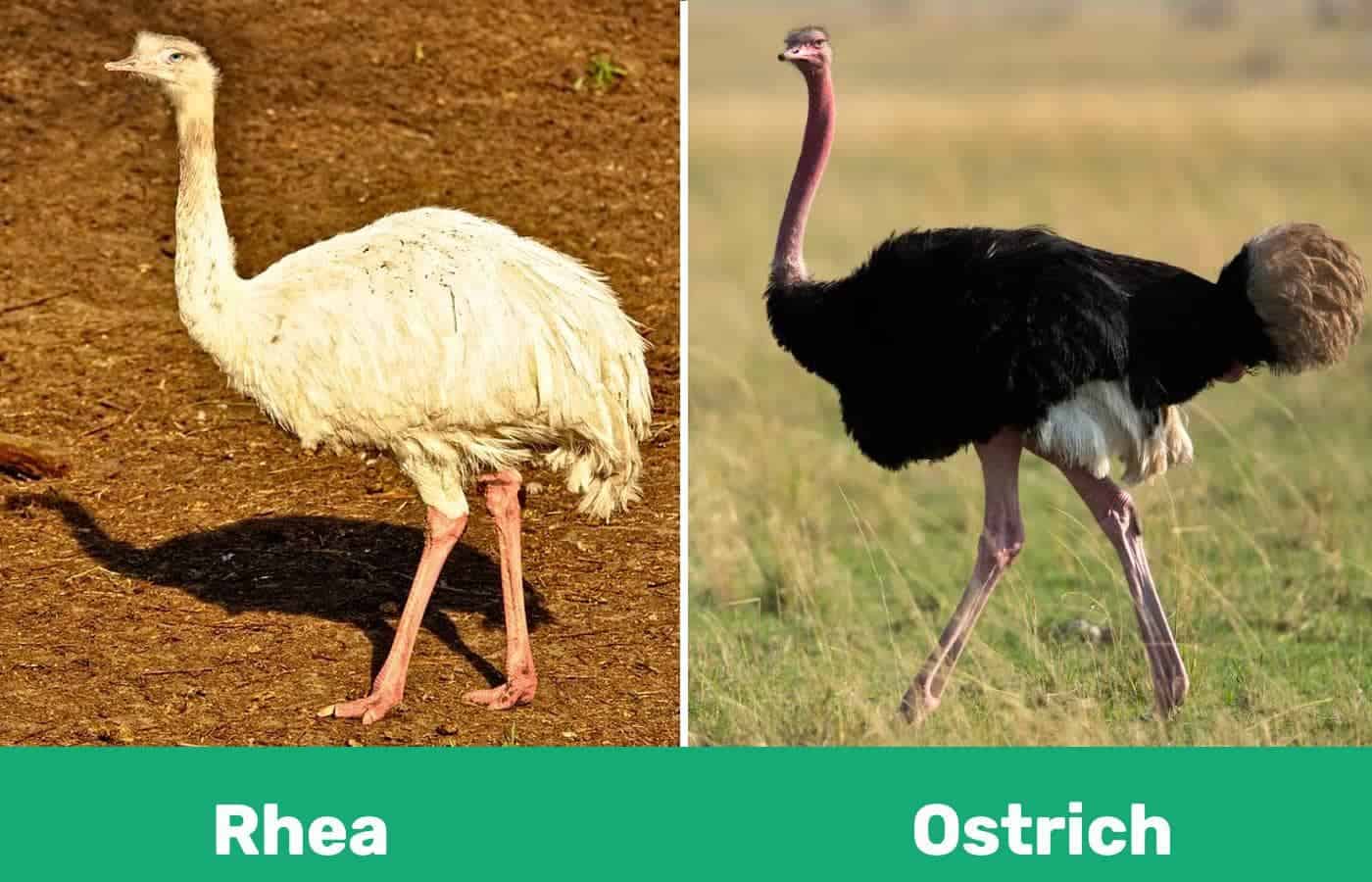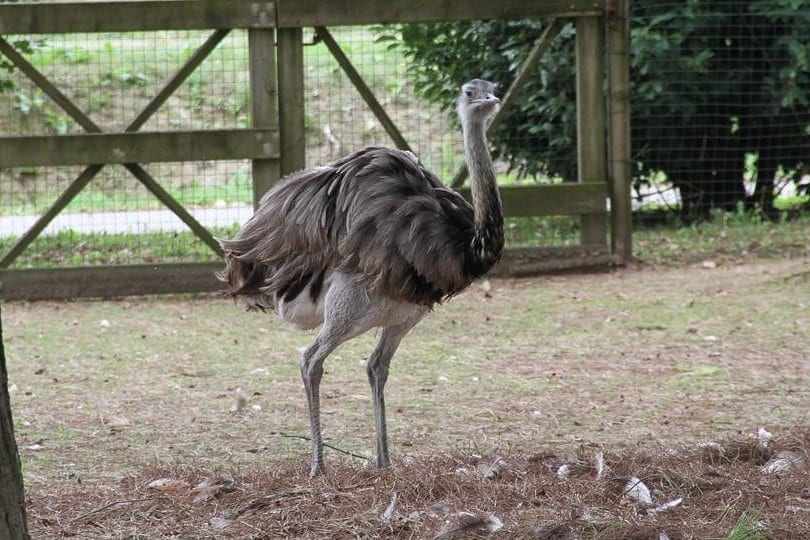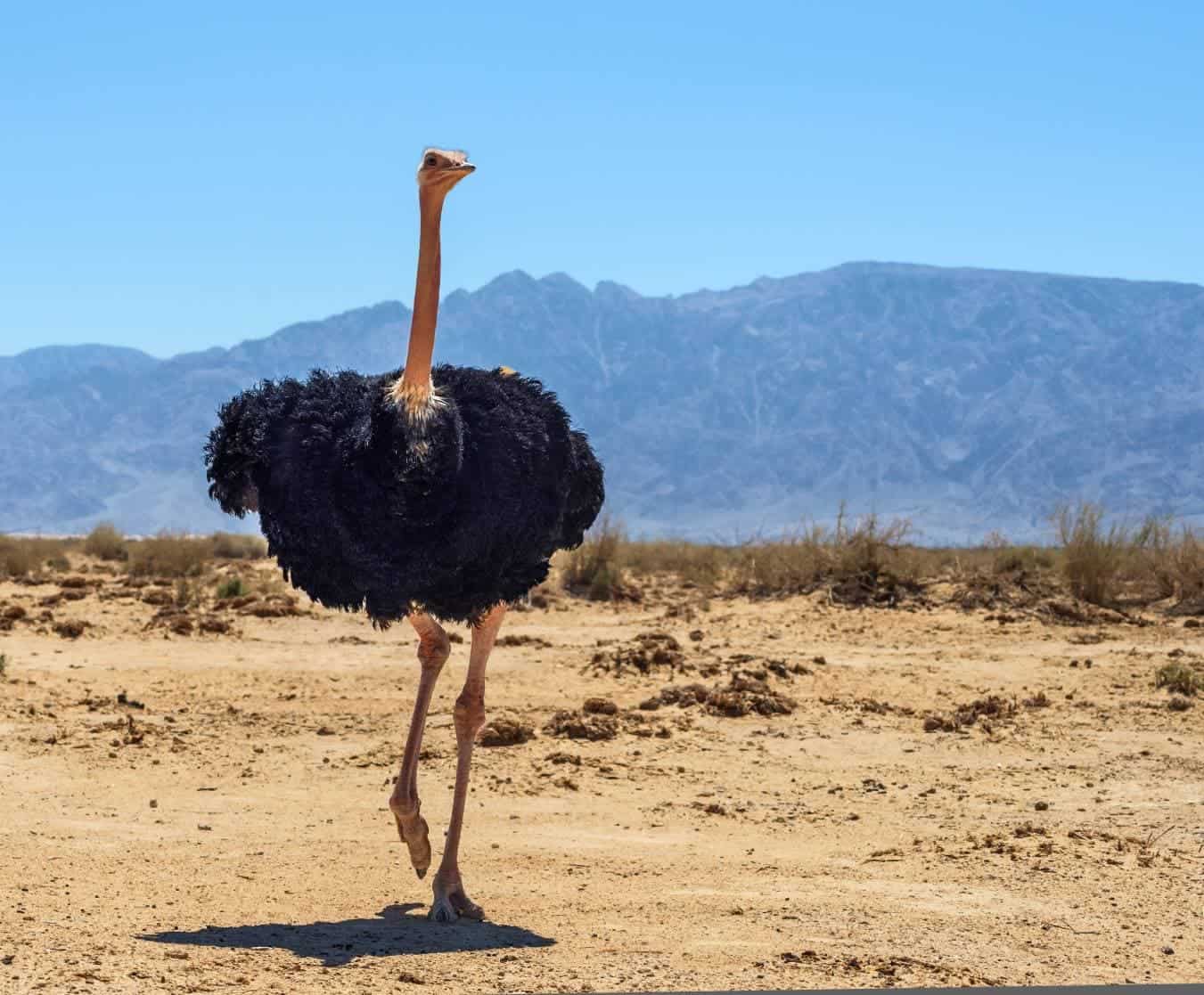You’ve probably seen ostriches at a zoo or a farm. These big, flightless birds are easily recognizable no matter where you are. But if you’ve never heard of a rhea, you’re not alone. This smaller cousin of the ostrich is the largest bird in the Americas. Native to the plains of South America, it looks and acts a lot like an ostrich, but there are some pretty important differences too.

Visual Differences

At a Glance
- Origin: South America
- Size: 30–75 lbs, 3–5 feet tall
- Lifespan: 40 years
- Domesticated?: Yes
- Origin: Africa
- Size: 200–300 lbs, 6–9 feet tall
- Lifespan: 70 years
- Domesticated?: Yes

Rhea Overview

Rheas are flightless birds native to South America. They live in grassland and shrubland in Brazil, Bolivia, Paraguay, Argentina, and Uruguay. They are generally omnivorous, eating mostly plants like clover along with a variety of seeds, fruits, insects, and small animals. They even eat snakes and lizards!
Characteristics & Appearance
Rheas can reach up to five feet tall and 75 pounds. Males are generally bigger than females. They have long necks and long legs, with three-toed feet. Both males and females have fluffy feathers that are gray or brown, with males being slightly darker. During the mating season, males have a collar of dark feathers around their neck. Hatchlings are gray with darker stripes.
Uses
Rheas are a less common livestock animal, but in some areas, they are kept for their meat, eggs, and feathers. They have very dark, lean leg meat that many enjoy.

Ostrich Overview

Ostriches are tall, flightless birds native to Africa. They live on flat, grassy savannahs and deserts, where their large size and powerful legs help keep them safe from predators. These birds can run at 40 miles an hour or faster, and their powerful kicks can kill a human. Despite their formidable appearance, they eat mostly vegetation and insects, although they sometimes eat small animals as well.
Characteristics & Appearance
Ostriches are tall, with the females reaching over six feet in height and the males sometimes reaching nine feet. They have long, slender legs and necks that account for most of their height, and they can reach nearly 300 pounds. They have small wings that are not useful for flying, but they use their wings to keep balance while running. Male ostriches are usually black with white wing and tail feathers, while chicks and females are a soft brown and gray that blends into the savannah. They are the largest birds alive today and have the largest eyes of any land animal.
Uses
Ostriches have been kept as livestock for many different purposes. They are often raised for meat and leather. In addition, ostrich feathers are often used for feather dusters or for decorative purposes. In most countries, live-plucking of feathers is illegal, so feathers are harvested as a byproduct of ostrich meat. Ostriches can also be trained to wear a saddle and carry humans.

What Are the Differences Between Ostriches and Rheas?
The biggest difference between an ostrich and rhea is their size. An adult ostrich is much larger than an adult rhea. Male ostriches also differ in coloring from rheas, with black and white plumage that is instantly recognizable. However, at a glance, it can be easy to mistake a rhea for a young ostrich. The easiest difference to spot is that rheas have three toes while ostriches only have two.
There are also some differences in behavior between the two birds. Ostriches and rheas both live mostly in flocks, but during the breeding season, their habits are very different. Ostrich hens all lay their eggs in a shared nest incubated by the dominant hen during the day and the male at night and then stay together as a flock to raise their eggs. Rhea males go off to be alone and then call females to them, letting several females lay eggs in one big nest. Then the male incubates the nest and raises chicks on his own, chasing off any animals that come near until the chicks are old enough to join the flock.

Which Bird Is Right for You?
If you want to expand your small farm by adding some big birds, ostriches and rheas are two options. Ostriches are more common and have a greater market for their meat, but they do require a lot more care to keep safely because of their size. Ostrich kicks can severely injure or even kill a human, so precautions are needed when working with them. On the other hand, rheas are smaller and yield less meat, but they require less space and setup. If you can find rheas, they might make a good alternative to ostriches.
Featured Image Credit: Rhea – MabelAmber, Pixabay, Ostrich – Piqsels
